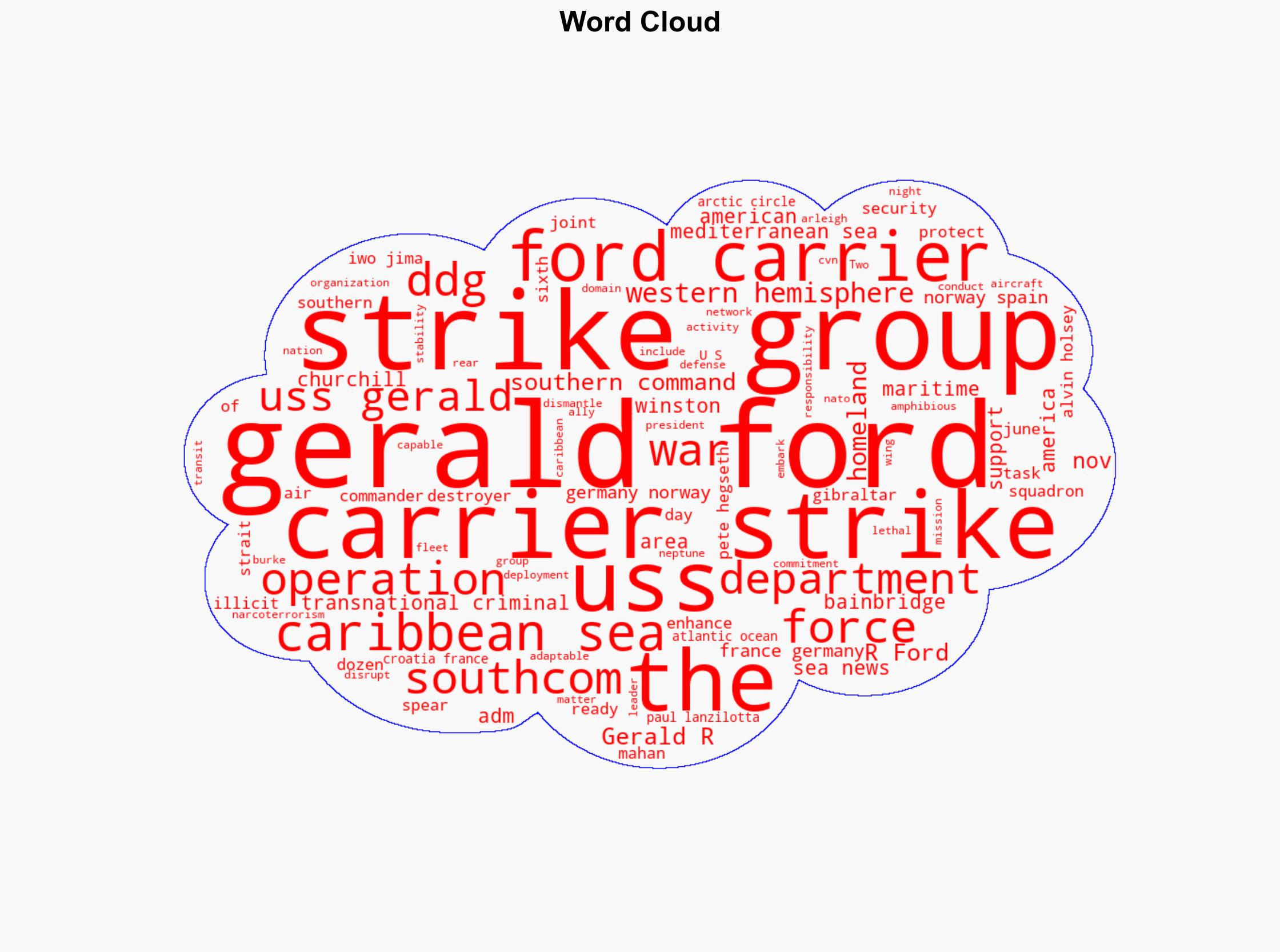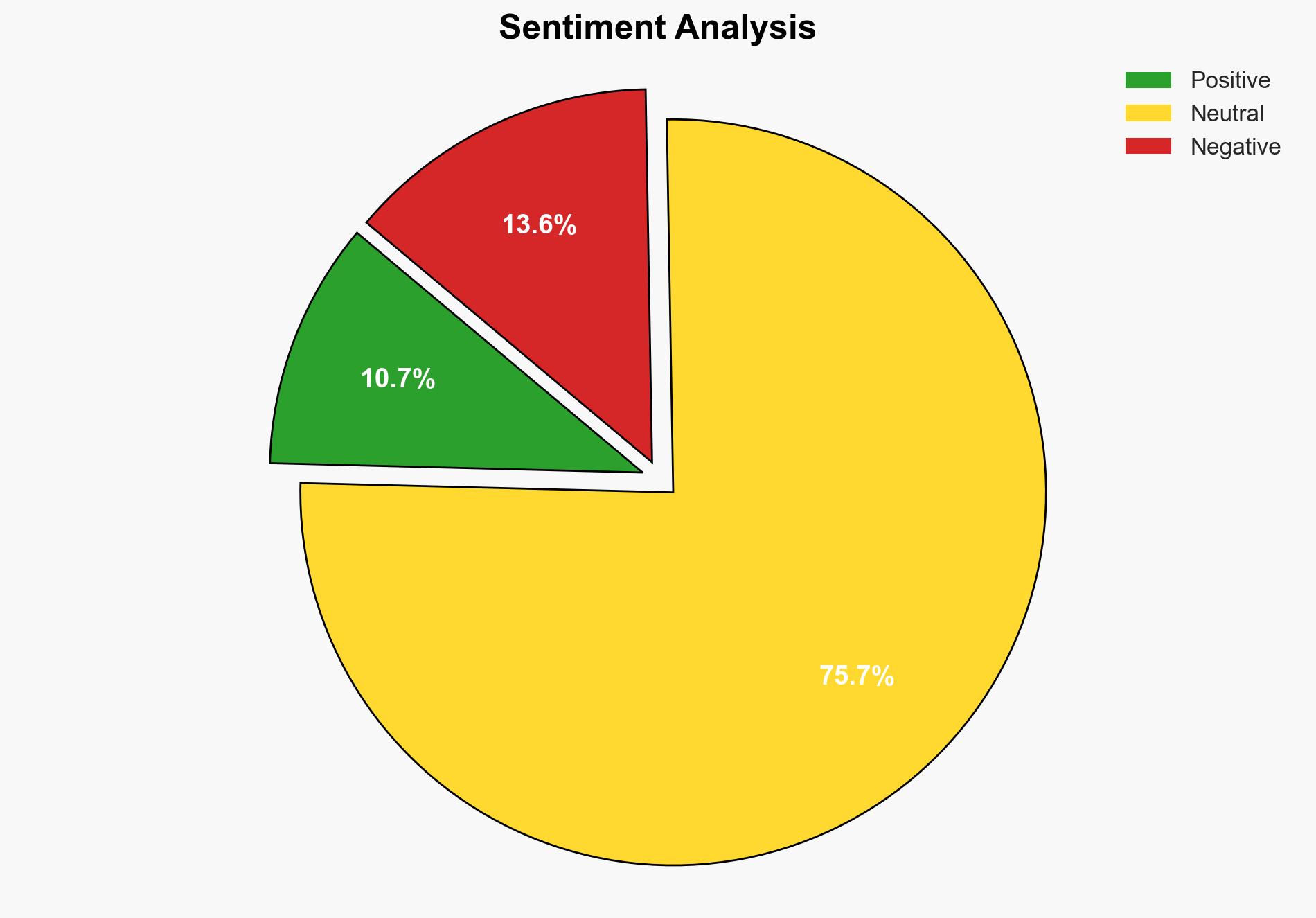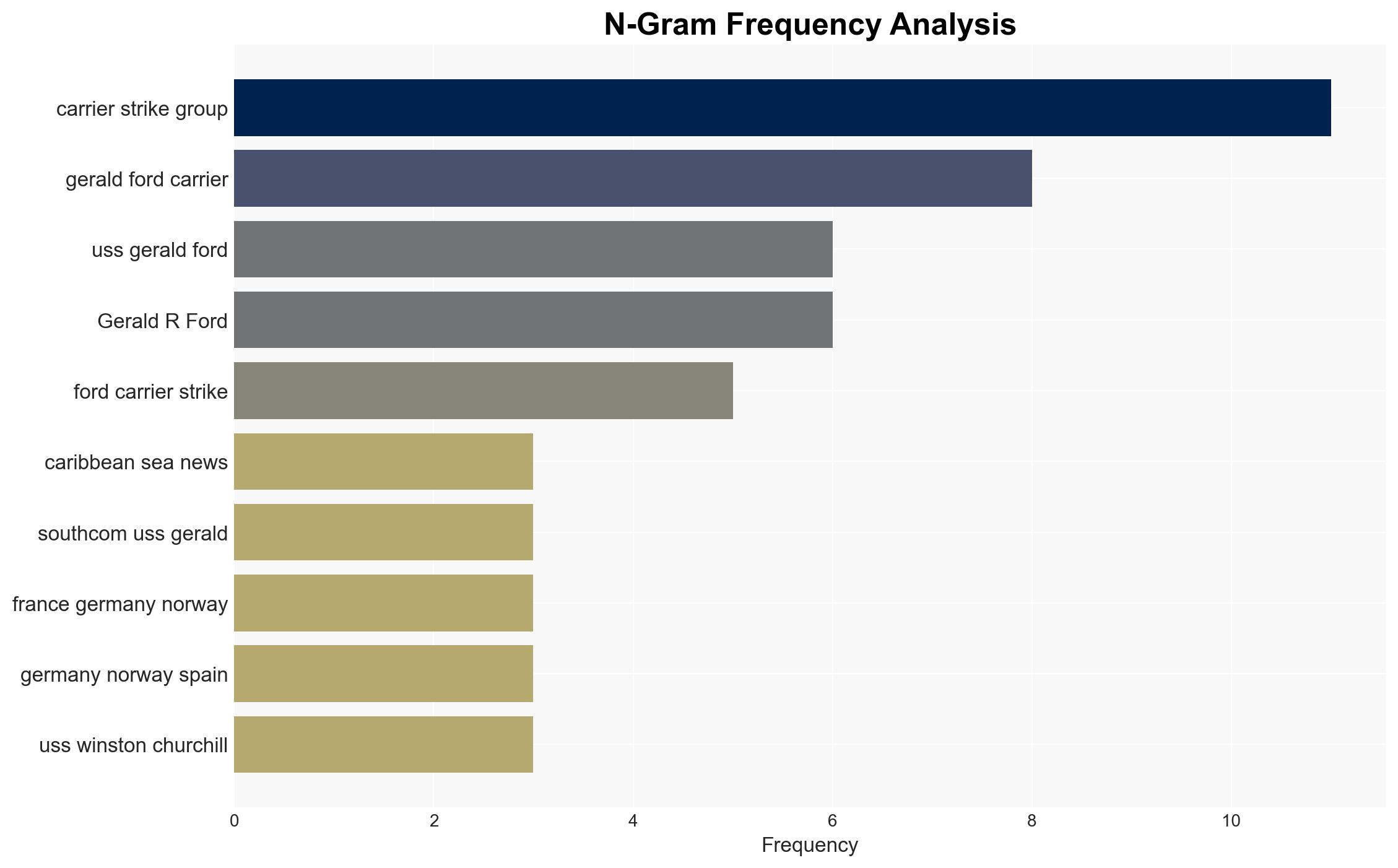Gerald R Ford Carrier Strike Group Enters Caribbean Sea – Globalsecurity.org
Published on: 2025-11-17
AI-powered OSINT brief from verified open sources. Automated NLP signal extraction with human verification. See our Methodology and Why WorldWideWatchers.
Intelligence Report:
1. BLUF (Bottom Line Up Front)
The deployment of the USS Gerald R. Ford Carrier Strike Group to the Caribbean Sea is a strategic maneuver aimed at countering transnational criminal organizations and narcoterrorism, with a high confidence level in its deterrent effect. The most supported hypothesis is that this deployment is primarily a show of force to reinforce U.S. commitment to regional stability and security. Recommended action includes enhancing intelligence-sharing with regional allies and increasing maritime patrols.
2. Competing Hypotheses
Hypothesis 1: The deployment is primarily a strategic deterrent against transnational criminal organizations and narcoterrorism, demonstrating U.S. commitment to regional security.
Hypothesis 2: The deployment serves as a preparatory step for potential military operations beyond counter-narcoterrorism, possibly involving geopolitical signaling to other state actors in the region.
The first hypothesis is more likely due to explicit statements regarding the mission’s objectives and the historical context of U.S. military presence in the region for counter-narcoterrorism efforts.
3. Key Assumptions and Red Flags
Assumptions: The U.S. has reliable intelligence on the activities of transnational criminal organizations in the region. The deployment will not provoke significant escalation from other state actors.
Red Flags: Lack of transparency in the true scope of the mission could indicate broader military objectives. Potential for misinterpretation by regional powers could lead to unintended escalation.
4. Implications and Strategic Risks
The deployment could lead to increased tensions with countries that perceive the U.S. presence as a threat to their sovereignty. There is a risk of escalation if regional actors misinterpret the deployment as a precursor to broader military action. Economically, increased military presence could disrupt regional trade routes if tensions rise.
5. Recommendations and Outlook
- Enhance intelligence-sharing and joint operations with regional allies to improve maritime domain awareness.
- Engage in diplomatic efforts to reassure regional powers of the deployment’s defensive nature.
- Best-case scenario: Successful deterrence of criminal activities with strengthened regional alliances.
- Worst-case scenario: Misinterpretation leads to regional conflict or economic disruption.
- Most-likely scenario: The deployment achieves its deterrent objectives with minimal escalation.
6. Key Individuals and Entities
Pete Hegseth, Alvin Holsey, Paul Lanzilotta
7. Thematic Tags
Structured Analytic Techniques Applied
- Cognitive Bias Stress Test: Expose and correct potential biases in assessments through red-teaming and structured challenge.
- Bayesian Scenario Modeling: Use probabilistic forecasting for conflict trajectories or escalation likelihood.
- Network Influence Mapping: Map influence relationships to assess actor impact.
Explore more:
National Security Threats Briefs ·
Daily Summary ·
Support us
·





